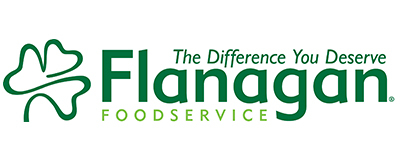
We collect basic website visitor information on this website and store it in cookies. We also utilize Google Analytics to track page view information to assist us in improving our website.

Face it: breakfasts can be ho-hum.
The first meal of the day, the meal with which we literally “break” our “fast” of the previous eight hours while we have slept, is, many nutritionists tell us, the most important meal of the day.
While it continues to be the fastest growing daypart, foodservice establishments should start to wake up and see breakfast with fresh, new eyes (eyes recently rubbed awake after a good night’s sleep), especially at this traditionally slower time of the year.
Yet we struggle over its early morning preparation and find the range of breakfast possibilities somewhat limited as much by habit as anything - so much so, in fact, that we often skip this important meal altogether, something that rarely happens at lunch and dinner.
Pancakes, fruit salad, traditional bacon and eggs: one thing is for sure, and that’s that people generally love it when someone makes breakfast for them. It’s a quirk of human nature that restaurateurs and foodservice operators should consider taking advantage of.
With a bit of thought and planning, this first meal of the day can be relatively easy and convenient to make – and appetizingly profitable at the cash register to boot.
“There’s a slam dunk answer,” said Mark Halperin, COO and culinary director at San Francisco’s Center for Culinary Development. “If you don’t offer breakfast and you want to increase your bottom-line revenue, a way is to attack a daypart you’re are currently not servicing.”
Some facts and figures can seal the deal. According to the NPD Group, for the year ending August 2009, breakfast-meal visits account for 22% (that’s about one in five) QSR visits and 18% of total sales.
And perhaps understandably, given the rush your potential customers might find themselves in, breakfast is a convenient and price-focused meal perhaps more than any other.
Customers, claim NPD, are looking for a good price, even more so necessarily, than a “healthy” food option. Factors of loyalty, a sense of treating oneself, food variety and quality all rank ahead of “healthy or light meal” motivations.
Yet, Halperin adds that the possibilities are endless.
“For whatever reason, we as a culture have decided that from a dietary standpoint, just about anything goes between about 6 a.m. and 11 a.m.”
Breakfast sandwiches continue to rank at the top of both the menu items selected by breakfast customers and in growth. Coffee is still the top beverage selection but the kind of coffee served might be changing: specialty coffees (including cold brew coffee) are playing at a close second, followed by carbonated beverages, teas, juices, milks, waters, and non-carbonated soft drinks.
However, Halperin warns that at breakfast time, people may not be ready to mess with their coffee flavours. It comes down to knowing your consumer, he advises, and especially the kind of breakfast eater you might be cooking and brewing for.
“There’s not just one kind of breakfast consumer. People come in with different needs even though the time period is from 6 a.m. to 9 a.m., or whatever. There are people who just want to run in and run out. There are people who might want to linger a bit longer.”
What ends up on the plate is important to consider, too. When determining a breakfast menu, it is important to think about offering items and dishes that people can’t (or won’t) prepare at home. You can have a plain ol’ cuppa joe and dry toast at home, or you can visit a restaurant for a hot, satisfying breakfast that you just can’t make in your own kitchen.
One key is to look toward innovative breakfast foods that establish a strong niche for you in your market. Everyone can slap down a few rashers of bacon; however, if yours is the restaurant that has specially selected cherry wood smoked bacon, then you may be on to something, Halperin said.
“If you are going to the effort of starting a new daypart that you don’t ordinarily offer, then absolutely you have to differentiate because nobody is going to hear about you.”
He points out that Escoffier had something in the order of 450 egg recipes, so this already popular item is fertile ground for new approaches to eggs for breakfast.
“There are about a zillion ways to use eggs as the primary dish: scrambled, fried, poached and in omelettes. But if you think of eggs as a ‘carrier’ in a quiche or frittata, you could invent a more unique breakfast item that might be unexpected for the consumer.”
Breakfast, suggests Halperin, is a meal consumers rely on and in which they generally find repetition and familiarity more so than with lunch and dinner. One solution is to offer subtle changes.
At the end of the day-or at the beginning of it-you need to find the right balance that is intriguing but that remains approachable for people: it’s a case of what’s old becoming new again.
“Invent a name for your frittata that won’t scare anybody off,” he adds. “Prepare it with breakfast-friendly flavours that are consistent with the palate of your consumer, but market it as having a little bit of a twist. They aren’t interested in revolution. They’re interested in evolution.”

